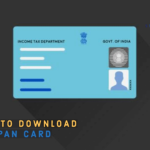Ever since the date of introduction, every person wants to know that what is GST in India? GST is a tax reform which attempts to create a common national market. GST has subsumed multiple indirect taxes (like VAT, CST, Entertainment Tax, Service Tax, Excise duty, etc.).
In the whole world, France was first to implement Goods and Services Tax (GST) in 1954. Now, more than 160 countries have implemented GST in some form or another.
GST is also a form of Value Added Tax levied on manufacturing, sale, and consumption of goods and services. Also, it is to be noted that GST, does not differentiate between Goods and Services, therefore the two are taxed at Single Rate.
WHAT IS GST IN INDIA?
GST stands for Goods and Services Tax, which was introduced in India on 1st day of July of the year 2017 at midnight. India is a federalist country, where each Structure i.e. (Centre and State) has powers to make its laws in allowed spheres.

In India, taxation is an area under which both Centre and States have powers to levy and collect taxes. This further created questions in the arena of what is GST in India? What is the meaning of GST has been the talk of the town since inception.
India has adopted a dual GST model. In this model, the power to levy taxes is vested with both Centre and States. Centre has the power to tax intra-state supply & States have the power to tax services. Whereas, earlier Centre was not allowed to tax intra-state supply and states were not allowed to levy a tax on services.
GST has brought with it uniformity and reduction in compliances
Components of GST
Following are the main components of GST:
Central Goods and Services Tax (CGST) Full form of CGST is Central Goods and Services Tax. CGST is charged on intra-state supply of goods and services by the Central Government. It comes under the purview of the CGST Act, 2017.
State Goods and Services Tax(SGST) Full form of SGST is State Goods and Services Tax. SGST is charged on the intra-state supply of goods and services. It is collected by the State Governments of the respective states. It comes under the purview of the SGST Act, 2017.

Union Territories Goods and Services Tax (UTGST): Full form of UGST is Union Territories Goods and Services Tax. UGST is charged on the intra-state supply of goods and services. It is collected by the Union Territories. It comes under the purview of the UTGST Act, 2017.
Integrated Goods and Services Tax (IGST): Full form of IGST is Integrated Goods and Services Tax. IGST is charged on the inter-state supply of goods and services. The Central Government has the power to collect IGST and apportion it between states/union territories. Integrated goods and services tax comes under the purview of the IGST Act,2017.
What is the Inter-State Supply?
What is GST in India has an interesting component called Inter-State Supply. Inter-state supply means the supply of goods or services to a state or union territory different from the place of supply of such goods or services.
Supply of goods or service to foreign tourists, Special Economica Zones (SEZs) is considered inter-state supply including imports and exports. Depending on the place of supply, GST in India is levied on products or services.
What is the Intra-State Supply?
Another notable point under the topic what is GST in India is intra-state Supply. Inter-state supply means the supply of goods or services to a state or union territory similar to the place of supply of such goods or services. Depending on the place of supply, GST in India is levied on products or services.
Introduction of GST was to create “One Market One Nation One Tax”.

What is the Input Tax Credit of GST in India?
GST offers a comprehensive and continuous chain of tax credits from the Producer’s point/Service Provider’s point up to retailer’s/consumer’s level. Therefore, levying tax only on value-added at each stage. This has been the prominent point of study for everyone under what is GST in India. It needs to be understood and interpreted carefully to avoid incorrect credit being availed.
The point which makes GST in India path-breaking is that it has unified all taxes, and now, Tax Credit is easily available to the person making the supply. In GST, the burden of bearing tax falls on the final consumer.
GST in India has helped in avoiding cascading effect (i.e. tax on tax). Earlier credit in VAT and Service Tax was also available to suppliers. But there was no credit available for taxes paid under other laws. It means, that person who was supplying goods, was charging VAT also on Excise Duty paid at the time of manufacture of such goods.
Conclusion – What is GST in India?
Overall, it has been more than a couple of years since inception and now professionals have an understanding around what is GST in India. It is proving to be a much-awaited and required tax reform in the Indian economy.
FREQUENTLY ASKED QUESTIONS (FAQs)
1. Are GST and VAT are the same type of tax?
No, GST and VAT are two different types of the taxation system. In GST both goods and services are taxable but in VAT only goods were taxable.
- Can I avail ITC under GST in India?
Yes, you can avail ITC under the GST in India. To avail the Input Tax Credit, the user must file GST Returns.
- Who makes rules and regulation of GST in India?
The Central Government on the recommendations of the GST Council makes the rules and regulations of the GST Act.
- Does State have the power to tax services under the GST Act
Yes, in the GST regime states have been given the right to levy a tax on services.

- What is the type of taxation system is GST?
GST in India is a consumption-based indirect taxation system. Where power to levy taxes lies both with the Central Government and State Government.
6. What are the various types of Taxes introduced under GST?
There are four types of taxes under the GST system, which are as follows:
- CGST- Central Goods and Service Tax
- SGST- State Goods and Service Tax
- UTGST- Union Territories Goods and Service Tax
- IGST- Integrated Goods and Service Tax
- Who can apply for GST Registration?
7. What type of tax is charged on Inter-State supply of goods and services?
On inter-state supply of Goods and Service, IGST i.e. Integrated Goods and Services Tax is charged.
8. Who can apply for GST Registration?
Any person can apply for registration under GST. There is also an option to apply for GST registration voluntary.

- Can I register or file returns online in GST?
Yes, GST is implemented in India to make the whole process seamless and efficient. Therefore the whole GST system is implemented on an online portal.
- What is the official GST portal?
www.gst.gov.in is the official GST Portal which further provides clarity around what is GST in India
- Is GST applicable to all types of Goods and Services in India?
No, GST is not applicable on goods or services mentioned in Negative List. For example Petrol or Alcohol for human consumption, etc.
StairFirst is an e-service platform which provides company registration, corporate compliances, GST, income tax-related and other professional services related to startups / new and old businesses. Contact Us for details




1 comment
[…] GST, the apparel and clothing segment is divided across various chapters. This industry is so diverse […]